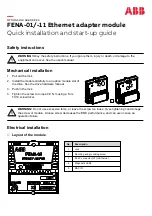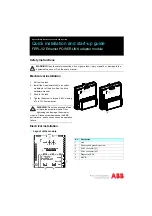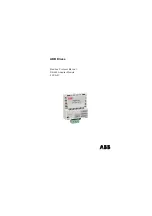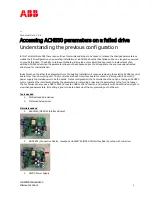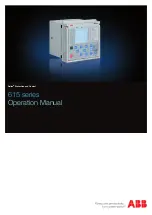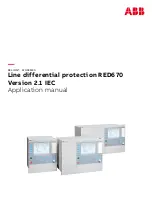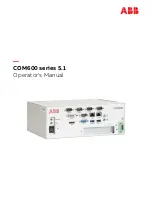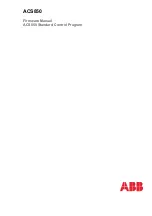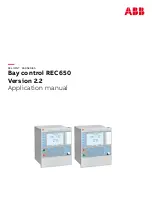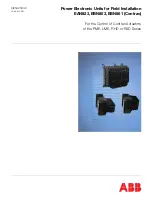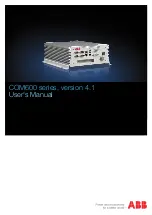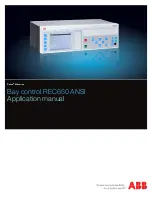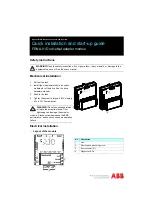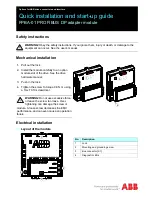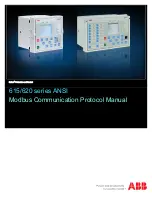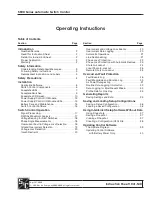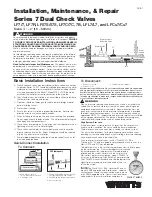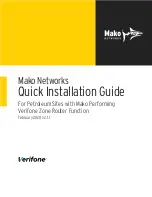
5
SuperBus® 2000 Commercial RF Transceiver Module
Specifications
2.
If the module power LED still stays off, replace the
transceiver.
Module green power LED is on, but doesn’t flicker
when wireless transmitters are tripped (no or limited
wireless operation).
1.
Check transceiver antenna connections.
2.
Check for transceiver antenna proximity to metal
obstructions such as ducting or AC wiring.
3.
Verify sensor(s) is learned into panel memory.
4.
If the transceiver still malfunctions, replace the
module.
The red bus status LED flashes, but system does not
respond.
1.
Check panel/transceiver programming.
2.
Delete transceiver from panel memory and relearn. See
Advent Panel Installation Instructions for specific
details.
3.
If the transceiver still malfunctions, replace the
module.
Specifications
Compatibility:.............. ITI Advent panels (60-562-01,
60-562-02, 60-562-03).
ITI
319.5 MHz crystal Learn
Mode
™
wireless sensors and
touchpads. All dry contact type
hard wire contacts.
Number of Wireless Sensors:
....................................... Limited to the maximum capacity
of the panel.
Hardwire Zones:.......... One Class B, Style A supervised,
fire-rated, normally open or closed
dry contact zone input.
Power Required:.......... 12 VDC nominal at 50 mA maxi-
mum (from panel).
Data Bus:...................... ITI SuperBus 2000, auto address-
ing digital data bus.
Data Bus Range:.......... Up to 4,000 feet from panel (18
gauge or larger hookup wire)
Signal Range: .............. 3,500 feet typical in metal case,
open air. 2,500 feet typical in plas-
tic case, open air (may vary with
application)
Temperature:
Operating ...................... 32° to 120°F (0° to 49°C) for
extended periods. Up to 140°F
(60°C) under temporary condi-
tions.
Storage .......................... -30° to 140°F (-34° to 60°C).
Maximum Humidity: .. 90% relative humidity, noncon-
densing.
Table 2: Wireless Device Compatibility
Part
No.
Description
60-348
Learn Mode Hand Held Wireless Touchpad
60-362
Learn Mode Door/Window Sensor
60-409
Learn Mode Recessed Door/Window Sensor
60-452
Learn Mode Pendant Panic Sensor
60-453
Wall-Mount Wireless Touchpad
60-457
Dual Button Panic Sensor
60-458
Single Button Panic Sensor
60-459
Sound Sensor
60-460 * Rate-of-Rise Heat Sensor
60-461
Learn Mode Shock Sensor (with 13-214 Detector)
60-462
Learn Mode Glass Guard Sensor
60-499
Learn Mode Slim Line Door/Window Sensor
60-504
Learn Mode Freeze Sensor
60-506 * Learn Mode Smoke Sensor (System Sensor)
2100RF
60-511
Learn Mode DS924i PIR Motion Sensor
60-578
Water-Resistant Pendant Panic Sensor
60-582
Learn Mode Sound Sensor
(IntelliSense)
60-589
Learn Mode Fire Pull Station Sensor
60-597
HiTech Hand Held Wireless Touchpad
60-606
Four Button Keychain Touchpad
60-607
Two Button Keychain Touchpad
60-615
Quick Bridge Learn Mode Repeater
60-641
Learn Mode Long Life Door/Window Sensor
60-642
Learn Mode Long Range Transmitter
60-652
Carbon Monoxide Sensor
60-658
Learn Mode Carbon Monoxide Sensor (COS-200)
60-688
Learn Mode Micro Door/Window Sensor
60-691
Learn Mode Cash Drawer Sensor
60-703
ITI PIR Motion Sensor
60-741
Learn Mode Recessed Micro Door/Window Sensor
60-834
Learn Mode FlexGuard Sound Sensor
60-838 * Wireless Smoke Sensor (System Sensor
2100ARFT)
60-848 * ESL/ITI Wireless Smoke Sensor (for UL 217 listed
residential installations)
60-849 * ESL/ITI Wireless Smoke Sensor (for UL 268 listed
commercial installations)
*
Learn mode repeaters are not UL 864 listed. All wire-
less fire devices (rate of rise heat sensors and smoke
sensors) cannot be used with repeaters. Fire sensor sig-
nals transmitted from repeaters cannot be processed by
the RF Transceiver.
Table 2: Wireless Device Compatibility (Continued)
Part
No.
Description







